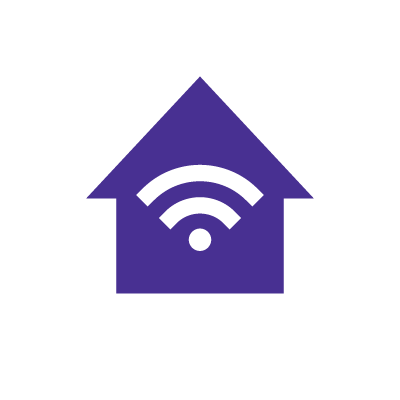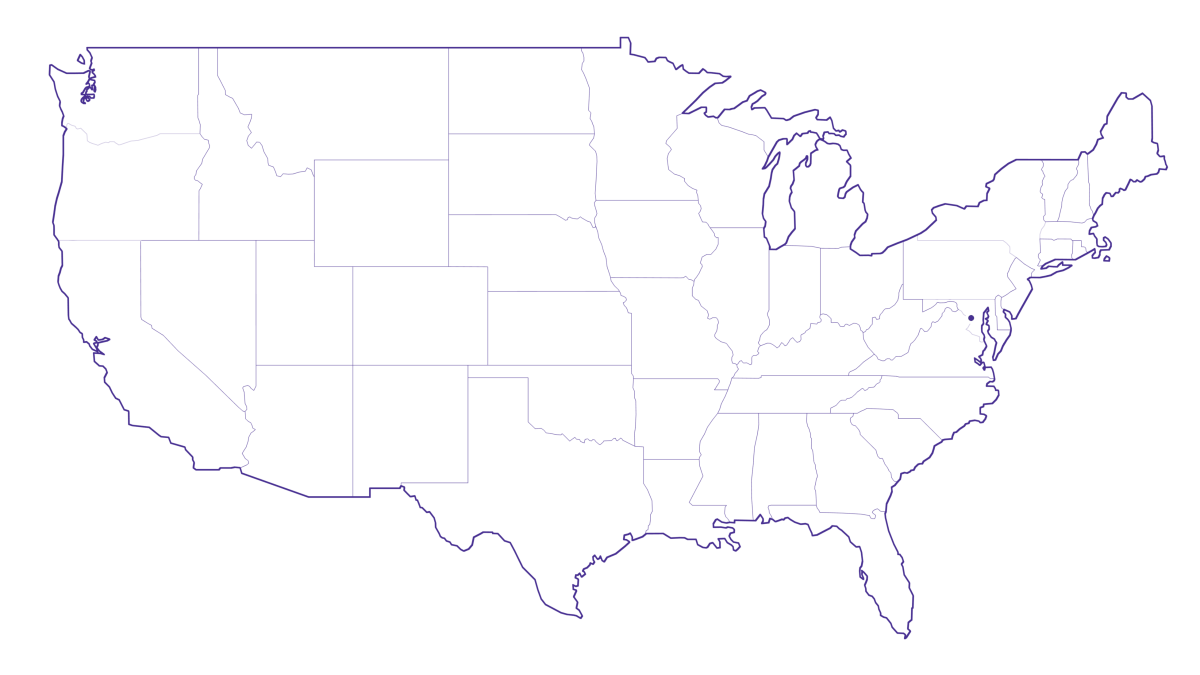What is WiFi 5? And is it fast enough?

Since 1997, there have been many developments in WiFi technology. Over the last twenty years, wireless connectivity standards have changed the ways the estimated 5 billion unique internet users now access the web.
Since the release of WiFi 0, or IEEE 802.11, the Institute of Electrical and Electronics Engineers (IEEE) has been setting the standards for WiFi, and all of its future iterations. Released in 2013, WiFi 5 was the standard for WiFi until 2021.
In this article, we’ll discuss the origins, the speed, and the future of WiFi 5.
WiFi that just works!
WiFi plans for any home
Tiny, large or somewhere in between; find WiFi coverage to fit any space. Blanket your entire home with a fast and ultra‑reliable connection.

What is WiFi 5?
WiFi 5, also known as IEEE 802.11ac, is the fifth generation of wireless networking standards. WiFi 5 supports data rates up to a theoretical speed of 3.5 Gbps. WiFi 5 handles bandwidth better than its predecessors, as well as adds additional channels, better modulation and other features.
WiFi 5 was the first WiFi standard to provide multiple input/multiple output (MIMO) technology, meaning multiple antennas could be used on both sending and receiving devices. The integration of MIMO technology with WiFi 5 reduced transmission errors and boosted overall speed.
Additionally, WiFi 5 uses the 5GHz band to transmit data, instead of the 2.4GHz band. Many devices and wireless networks previous to WiFi 4 used only the 2.4GHz band.
WiFi 5 vs. WiFi 6
Introduced in 2021, WiFi 6, also known as 802.11ax, is the sixth generation of wireless networking standards. WiFi 6 supports data rates with a theoretical speed up to 9.6 Gbps and is the current standard for all wireless networks.
If you’re choosing whether to stay with WiFi 5 or move to WiFi 6, it’s important to know more about the differences between WiFi 5 and WiFi 6.
Check out a list of six key differences:
1. Frequency Bands
- WiFi 5: Operates on the 5 GHz band.
- WiFi 6: Operates on both 2.4 GHz and 5 GHz bands.
2. Data Rates
- WiFi 5: Offers a maximum theoretical data rate of about 3.5 Gbps.
- WiFi 6: Has a higher maximum theoretical data rate of nearly 9.6 Gbps.
3. Channel Bandwidth
- WiFi 5: Supports up to 80 MHz, with optional support for 160 MHz.
- WiFi 6: Supports 20, 40, 80, and 160 MHz channel bandwidths.
4. Devices and Performance
- WiFi 5: Less efficient in handling multiple devices simultaneously.
- WiFi 6: More efficient in high-density environments, effectively managing numerous devices.
5. Latency
- WiFi 5: Has higher latency compared to WiFi 6.
- WiFi 6: Reduces latency significantly, improving response times.
6. Security
- WiFi 5: Typically uses WPA2 for security.
- WiFi 6: Supports the WPA3 security protocol, providing enhanced security features.
WiFi 6 is a significant improvement over WiFi 5, increasing data throughput, efficiency and capacity, especially in households with many users and multiple connected devices.
Switch & save
Astound is the #1 cable ISP
Stream live content, work, surf, game and connect to multiple devices with speeds up to 1500* Mbps through our ultra‑reliable fiber‑powered network.*

How fast is WiFi 5?
Though powerful, WiFi 5 is not as powerful as WiFi 6. Let’s take a look at some of the capabilities of WiFi 5’s speed.
Theoretically, WiFi 5 enables devices to transmit data over the 5GHz wireless frequency band at speeds of up to 3.5 Gbps. However, devices available to the general public are limited by the physical layer (PHY) specifications, which are the standard for modulating and receiving transmissions of WiFi.
In an ideal setting, a user may be able to achieve speeds at least up to 430 Mbps with WiFi 5. Regarding performance, two to six users in a household connected to WiFi 5 could:
- Comfortably browse the internet.
- Stream HD videos across multiple devices.
- Play some games online.
- Download files.
However, these speeds are dependent on many factors, such as channel configuration, spectrum and range. Your actual speed experience may vary due to network congestion, device performance and the quality of your WiFi connection.

Benefits of WiFi 5
In 2013, WiFi 5 represented a breakthrough in wireless technology — faster speeds, improved efficiency, and better performance across multiple users and multiple connected devices. Let’s look into some of the key benefits of WiFi 5.
Faster Speeds
Compared to WiFi 4, WiFi 5 offers higher maximum data rates, enabling quicker internet browsing, faster file downloads and smoother streaming experiences.
Reduced Interference
As WiFi 5 operates exclusively on the 5 GHz frequency band, it experiences less congestion and interference than the 2.4 GHz band, meaning cleaner and more stable connections.
Broader Channel Bandwidth
Compared to the maximum of 40 MHz in WiFi 4, WiFi 5 supports channel bandwidths of up to 80 MHz, and optionally 160 MHz, powering faster data transmission rates.
Beamforming Support
WiFi 5 routers often incorporate beamforming technology, which focuses the WiFi signal towards the connected device, rather than broadcasting it in all directions, improving signal strength and range.
Backward Compatibility
WiFi 5 is backward compatible with previous WiFi standards, including WiFi 4 (802.11n). This ensures that older devices can still connect to a WiFi 5 network, albeit without enjoying the full benefits of the newer standard.
With its higher speeds and greater efficiency than WiFi 4, WiFi 5 is well-suited for high-bandwidth applications like video streaming, online gaming and video conferencing.
Build your plan
Your perfect plan is just a click away
Get the speeds, WiFi, mobile and TV plans you need all at an affordable price. Bundle your services with Astound and see how much you can save.

When should I upgrade to WiFi 5?
Deciding when to upgrade to WiFi 5 depends on several factors related to your current setup, usage needs and the devices you own. Check your hardware’s WiFi compatibility settings and answer the following questions to determine if it’s time to upgrade.
- Are you unsatisfied with your current network performance?
If you are experiencing slow speeds, poor coverage or frequent disconnections, upgrading to WiFi 5 will increase your network performance. - Are you bringing new devices into the home?
If you have multiple devices that are compatible with WiFi 5 (like newer smartphones, laptops, or tablets) and you’re noticing network congestion, an upgrade may enhance the efficiency and speed of your network. - Is your household usage demanding higher speed?
If you or others in your network stream HD video, game online, work remotely, or download large files, WiFi 5’s better bandwidth utilization will offer noticeable improvements. - Is your home layout creating dead zones?
WiFi 5 routers provide better coverage than their predecessors and are more effective at handling signals over larger areas and through walls. If your current router struggles to cover your entire home or office, an upgrade will be beneficial. - Do you want a future-proofed network?
If you want your devices and users to benefit from the advances in WiFi technology, then upgrading to WiFi 5 will help to ensure you and your household benefit from the developments by the IEEE.
Before upgrading to WiFi 5, ensure that your primary devices support it. While WiFi 5 routers are backward compatible with older WiFi standards, you’ll only experience the full benefits of WiFi 5 if your devices also support it.
However, if you want to harness the real benefits of WiFi, look into WiFi 6 and beyond. These technologies are specifically designed to handle speeds greater than 1 Gig. Combined with a mesh WiFi system, you’ll have a reliable, high-performing network for your entire household and devices.

Mesh WiFi with
eero Secure
Enhanced Whole Home WiFi uses multiple routers (or eeros®) to boost range, speed, and stability, while eero Secure, included at no extra cost, offers parental controls, ad blocking, and internet backup for constant connectivity.
Do I need a WiFi 5 router?
Yes, you will need a WiFi 5 router to access the full benefits of WiFi 5.
Why?
WiFi 5 devices are backward compatible with older WiFi standards like WiFi 4. However, to achieve the speeds that WiFi 5 offers, both transmitting and receiving devices must support WiFi 5, meaning that not only your router and modem must be WiFi 5 enabled but also your phones, computers or tablets.
Similarly, if you want to access the full benefits of WiFi 6, check your devices compatibility and upgrade if necessary. Upgrading a device to a newer WiFi standard generally requires replacing the older device. If your devices are WiFi 6 compatible and you’re on an older WiFi standard, consider skipping WiFi 5 and moving directly to WiFi 6.
However, no matter your WiFi standard, all home networks can benefit from a mesh WiFi system. These systems, like eero, create a mesh network that enables multiple WiFi routers to work together, bringing improved range, speed and stability into your home.
Whether you have an apartment, a townhome or a single family house, enhanced Whole Home WiFi is easy to install and works regardless of your home’s shape or size.

eero Plus
eero Plus protects your family online with a password manager to safely create, store and share passwords, virus and malware protection and a VPN that lets you browse the web safely and securely.
WiFi 7: The Latest WiFi Standard
WiFi 7 (802.11be) is the latest development of WiFi standards, released by the IEEE in early 2024. WiFi 7 is marked by extremely fast data speeds, diminished latency and improved network performance, delivering an enhanced experience to not only users that require significant bandwidth, but also environments with a high density of users and connected devices.
WiFi 7 offers speeds up to 46 Gbps, compared to 9.6 Gbps in WiFi 6 and 6e and 3.5 Gbps in WiFi 5. Though actual speeds experienced by users will differ, WiFi 7 will usher in a new generation of lower-latency XR, AR, VR, video gaming and advanced video-conferencing applications.
WiFi 7 will introduce new features such as4K QAM modulation to enable peak speeds, and Multi-Link Operation (MLO) to maintain consistent low latency even in congested environments.
As with all other WiFi generations, WiFi 7 will be backward compatible and coexist with legacy devices. However, commercial and enterprise organizations will be the first to benefit, while consumers will have to wait for affordable WiFi 7 enabled devices to come onto the market.
Bottomline: Is WiFi 5 fast enough?
When compared to older WiFi standards, WiFi 5 offers better speed and connectivity. If you have a home internet connection with a few users and a few devices, you may not need an immediate upgrade.
However, if you experience a surge in users, devices, want to expand your network or access Gig+ speeds, consider upgrading to WiFi 6. It’s an established, affordable technology that will improve your home WiFi network overall.
No matter your WiFi version or set up, understand your internet needs first and choose the right ISP.
*Internet speeds may vary & are not guaranteed. Certain equipment may be required to reach advertised speeds. DOCSIS 3.1 modem with 2.5GE physical LAN port is required for 1 Gigabit speeds and higher. See astound.com/yourspeed for why speeds may vary. To view Astound’s FCC Network Management Disclosure see astound.com/policies-disclaimers. Limited time offer, subject to change without notice. Advertised promotional price valid for duration of the stated promotional period from time of service activation. Regular rates apply after promotional period ends. Equipment not included and is extra. Modem required for Internet service. Enhanced Wi-Fi or Whole Home Wi-Fi (eero) not included and is add’l. Offer includes a monthly discount for enrollment in both automatic payments (autopay) & paperless billing (e-bill). Discount of $10 applies with automated bank account deduction or a discount of $5 applies with automated credit/debit card payment. Valid email address required. Must complete enrollment in autopay and e-bill within 30-days of placing the order. Without enrollment, the discount does not apply. Discount appears on bill within 3 bill cycles after enrolling. If either autopay or e-bill is canceled, services are changed, or the account is not in good standing, then the monthly discount will be discontinued. Offer valid only for new residential Astound customers or previous customers with an account in good standing who have not had Astound service within the last 60 days. Any add’l services, equipment, premium channels & other tiers of service are subject to an add’l charge & regular increases. A one-time activation fee of $14.99 (in addition to any installation fees) will be charged & is subject to change. Add’l fees apply for taxes & surcharges, and are subject to change. WA RESIDENTS: unless otherwise specified, price does not include a 2% Regulatory Administration Fee. For details about taxes, fees & surcharges visit astound.com/fees. No early termination fees apply in the event service is terminated in advance of the promotional end date. Customer is responsible for any accrued service charges in the event service is canceled. Subject to credit check. Not all services & speeds are available in all areas. A multi-product discount may be available to qualifying addresses with a subscription to mobile, TV, and 600 Mbps Internet or higher. Discounts will be reflected in your order cart at time of purchase, if available. Other restrictions may apply. All services are governed by the Astound Customer Terms & Conditions that can be found at astound.com/policies-disclaimers. © 2025 Radiate HoldCo, LLC d/b/a Astound Broadband. All rights reserved.
While we have made every attempt to ensure that the information contained in this site has been obtained from reliable sources, Astound is not responsible for any errors or omissions, or for the results obtained from the use of this information. All information in this site is provided “as is”, with no guarantee of completeness, accuracy, timeliness and without warranty of any kind, express or implied, including, but not limited to warranties of performance, merchantability and fitness for a particular purpose. Certain links in this site connect to other websites maintained by third parties over whom Astound has no control. Astound makes no representations as to the accuracy or any other aspect of information contained in other websites.
eero Plus is available for an additional $9.99/month and requires subscription to whole home WiFi powered by eero.


















